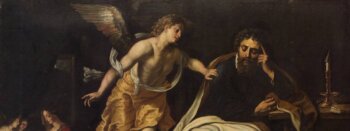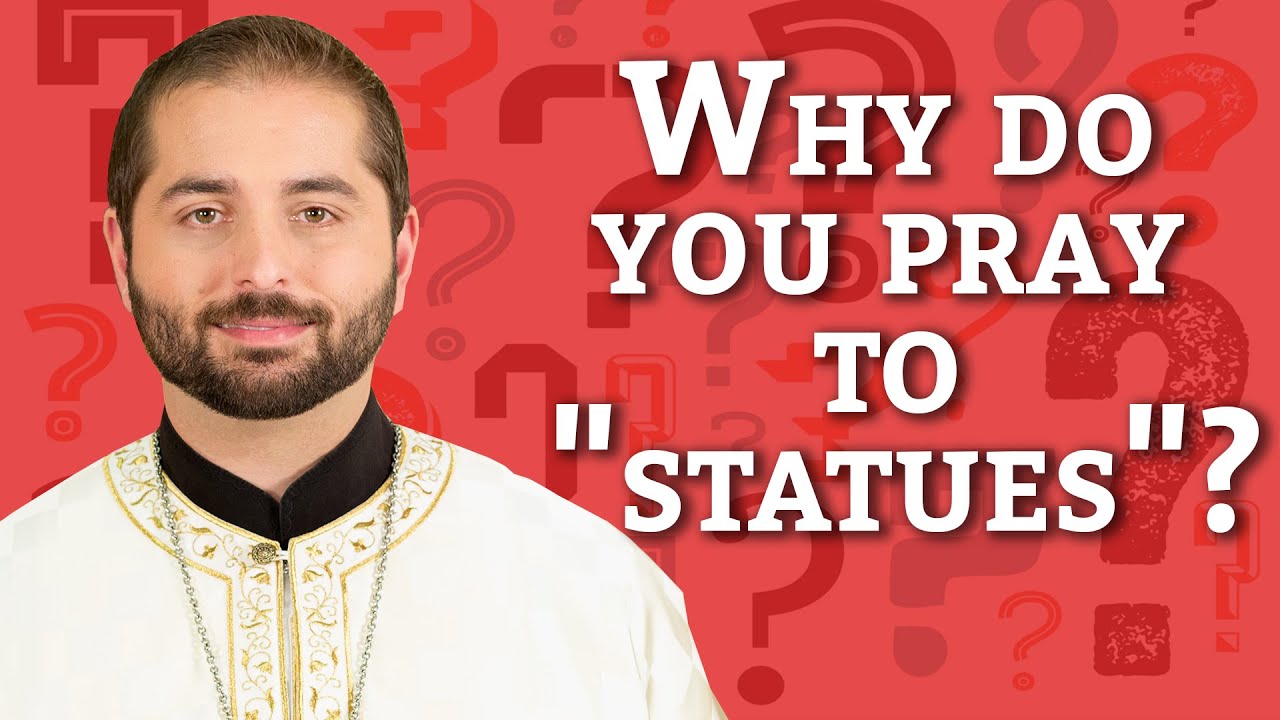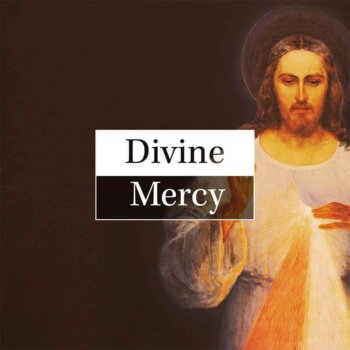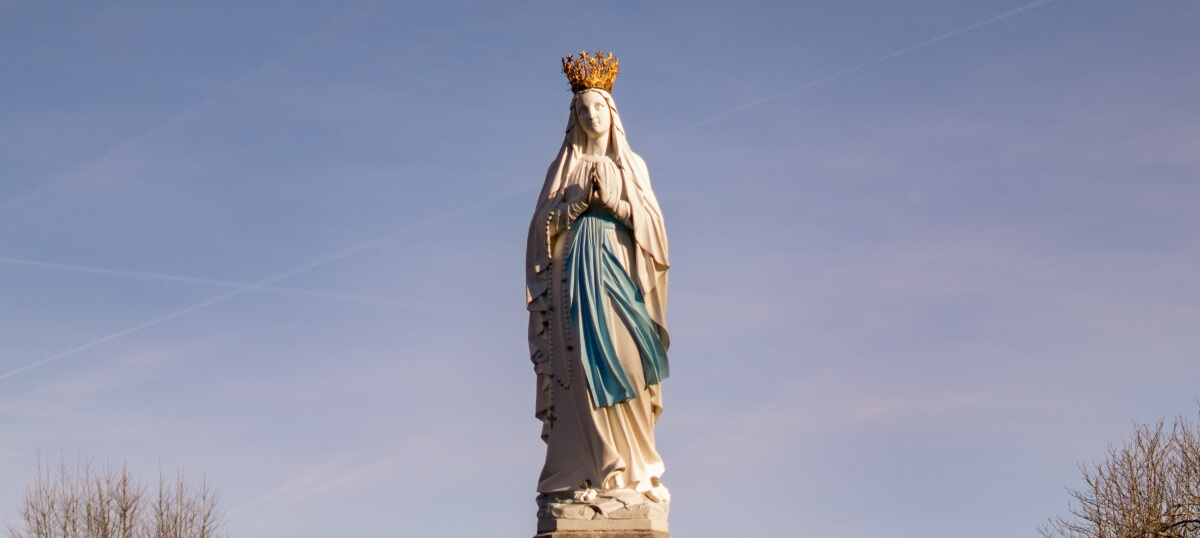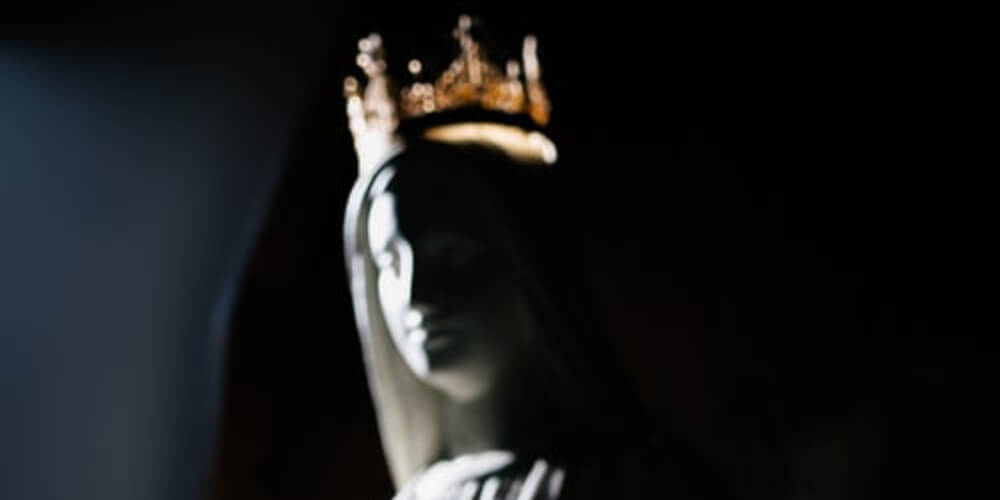
Through the authority of His Church on earth, God has revealed to us four essential truths about Mary’s identity, otherwise known as “the Marian dogmas.”
To be in full communion with Christ—the Church reminds us—we must believe in each of these dogmas. In other words, they aren’t optional beliefs.
“If anyone does not agree that the holy Mary is Mother of God, he is at odds with the Godhead.”
St. Gregory of Nazianzus in A.D. 382
Why would the Church treat these dogmas with such seriousness?
First, because they have been revealed by God.
Second, because through them, we understand truths about Jesus.
Each Marian dogma is—on the surface—only about the identity of Our Lady; however, each dogma also reveals the identity of Jesus Christ.
To reject these dogmas is to have an incomplete, and thus incorrect, idea about God. Likewise, to know Our Lady is to know Our Lord.
Let’s examine these four dogmas so that we can best honor Mary and her Son Jesus.
1) The Mary, Mother of God Dogma
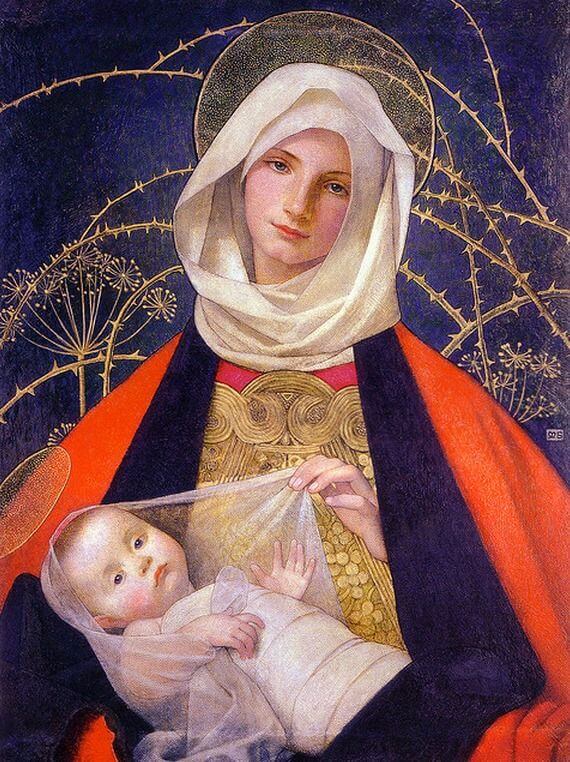
The first Marian dogma is the Divine Maternity of Mary, meaning that Mary is the Mother of God. This statement is at the very root of Our Lady’s identity and the identity of her Son.
In the first few centuries after Christ’s death, many false ideas about Him developed. Some said that Jesus had divine powers and a unique relationship with God the Father but was not divine. Therefore, since Jesus was not God, His death on the cross could not pay the infinite and eternal debt of sin for all mankind.
Others believed that Jesus was an ordinary man and we could, as he did, earn our own place in heaven without God’s mercy. “We have no need for God,” this heresy claimed—only a need to “be good people.”
Those who rejected the divinity of Jesus Christ did so in part because they refused to believe that God would be born of a woman. Humble Mary may have given birth to Jesus the man, they reasoned, but no woman could give birth to God Almighty. Thus, they reasoned, Jesus could not be God. They rejected Mary, and so rejected the fullness of Christ Himself.
In 431, the bishops of the Church held an ecumenical council at Ephesus. There, the bishops declared—with the authority of the Apostles—that Mary was Theotokos, the “God-bearer.” She was the person—not an angel or spirit from heaven, but the person—who carried the God-man in her womb and gave birth to Him. Jesus, who was God Himself, was incarnate of the Virgin Mary and became man.
Calling Mary the “Mother of God” does NOT mean that she is the Mother of God the Father or of God the Holy Spirit. They are God-eternal, she is a created human being. Obviously she is not the Mother of the Trinity.
But Jesus is God. Mary gave birth to Jesus. She did not just give birth to His human nature—mothers are not mothers of “natures” but of “persons”—and since Our Lady gave birth to the Person of Jesus Christ, she is honored with the title “Mother of God.”
This radical declaration of faith—that a poor woman from Nazareth gave birth to the Word Incarnate—is vital for truly understanding the person of Jesus Christ. It is only through the recognition of Mary’s identity as Divine Mother that we can understand our own salvation.
2) The Mary, Ever-Virgin Dogma
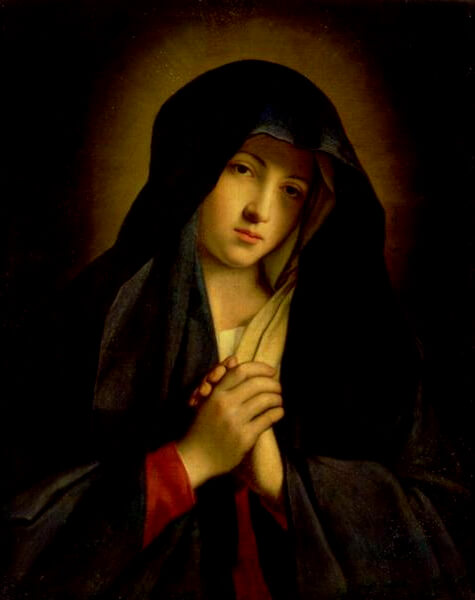
The second Marian dogma is that Mary remained a virgin throughout her entire life.
Sacred Scripture is very clear that Mary was a virgin when she conceived by the Holy Spirit. This was an essential sign that Mary’s son Jesus was indeed the Messiah:
Therefore the Lord himself will give you a sign. Behold a virgin shall conceive, and bear a son, and his name shall be called Emmanuel.
Isaiah 7:14
…the angel Gabriel was sent from God into a city of Galilee called Nazareth, to a virgin…and the virgin’s name was Mary…
Luke 1:26-27
The Sacred Tradition that comes down to us—dating back to the days of the Apostles themselves who knew Mary—has always taught that Mary was a virgin before, during, and after the birth of Christ.
The Fathers of the Church, Ecumenical Councils, Papal teachings, and the entire history of the Magisterium unanimously proclaim that Mary lived her entire life as a virgin dedicated to God.
This is not a “new” dogma “invented by the Church in the medieval ages.” It has been taught since the days of the early Christians.
3) The Immaculate Conception Dogma
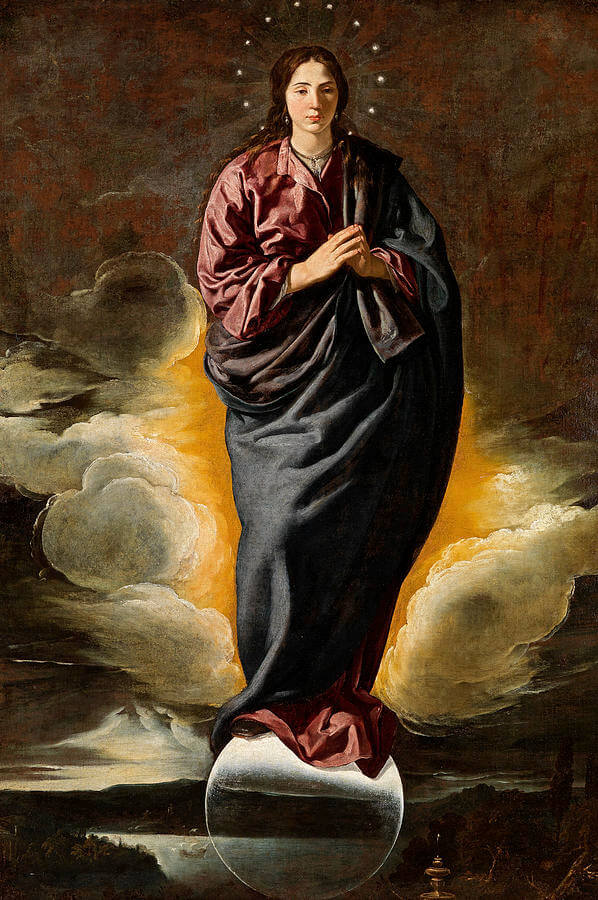
The third Marian dogma is the Immaculate Conception, which states that Mary was conceived in her mother’s womb without the stain of original sin in her soul. Why is it important that Mary was immaculately conceived in her mother’s womb?
Again, the answer lies in the identity of Christ. The Immaculate Conception is, in part, a clarification of what it means for Mary to be Theotokos.
Mankind inherits original sin from parent to child, inherent within the act of creation, and going back to the sin of Adam and Eve. But God is holiness itself, and cannot coexist with sinfulness. How can Christ have been true God and true man if this is the case? Would original sin be transmitted to Him in His nature as man?
This question has led some to reject Christ’s humanity; others His divinity. But rejecting either one of these fails to understand God’s identity and cheapens His loving generosity.
The Church teaches that Mary was in need of salvation, the same as any human, for the gates of heaven were closed to mankind after the Fall.
However, she was spared from original sin because God applied the graces of Her Son’s suffering to her preemptively (in other words, in advance—knowing that these graces would come to fruition) at the moment of her conception.
Just as the redemptive power of Christ’s suffering is transported over time and space to each of us in Baptism, so too was this salvific power miraculously transported to Mary at the moment of her conception.
Therefore, Mary was capable of being a true parent to the Christ child: not His surrogate or foster-mother, but His real and biological earthly mother.
And thus, Christ Himself was a true man, even as He was truly God.
It is for this reason—the importance of understanding Jesus as true God and true man—that Pope Pius IX declared with infallible authority that Mary was immaculately conceived.
4) The Assumption of Mary Dogma
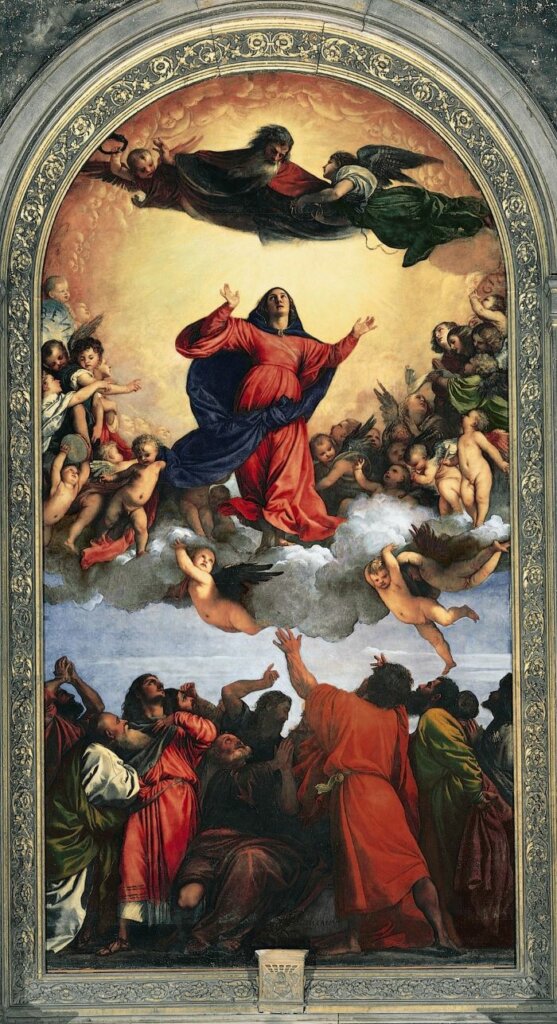
The fourth Marian dogma is the Assumption of Mary, which is the belief that Mary was taken to heaven—body and soul—and lives there now with Almighty God.
Unlike our dearly departed, who live separated from their earthly bodies until Christ comes again, Mary’s body and soul are already united in heaven. Instead, at the end of her earthly life, God brought her to paradise with Him in her complete humanity.
The tradition of Mary’s Assumption dates back to the earliest Christians, although it was not affirmed as an infallible dogma until 1950 by Pope Venerable Pius XII.
Mary’s assumption is a natural consequence of her Immaculate Conception and sinless life—both of which are prerequisites for her title as Theotokos, which dates back to the time of the Church Fathers.
Death and decay are the result of sin; Mary did not sin, and therefore did not pass into a state of decay. She did not need to wait for the Second Coming in order to receive full heavenly glory.
Mary Points to Jesus
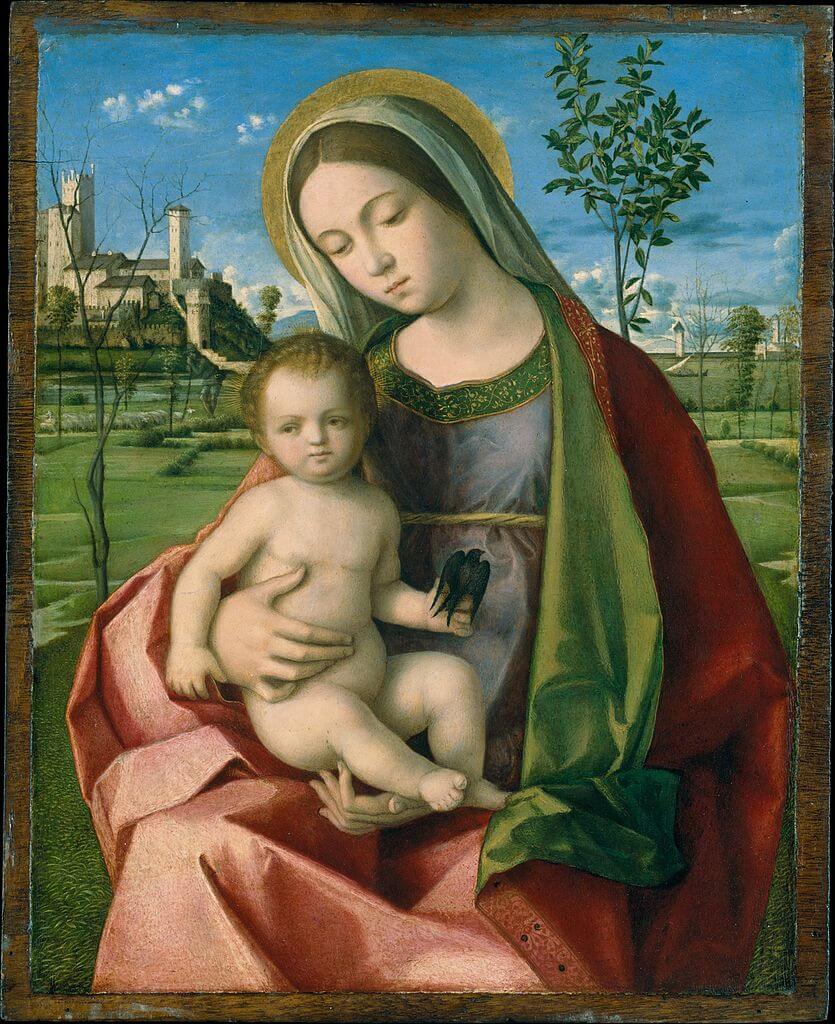
Through her special relationship with the Holy Trinity as the Mother of Jesus Christ, Mary is the most powerful saint in heaven. She intercedes for us and guides us to her Son Jesus so that we can know Him and love Him.
When we learn about her, we understand her beloved Son better.
Mary always points to Jesus. It is the joy of her life to lead others to Him.
That is why the moon is a symbol of Our Lady. Just as the moon has no light of its own, but reflects the light of the sun, so Mary reflects the True Light of the Eternal Son.
Resources to Explain and Defend the Marian Dogmas
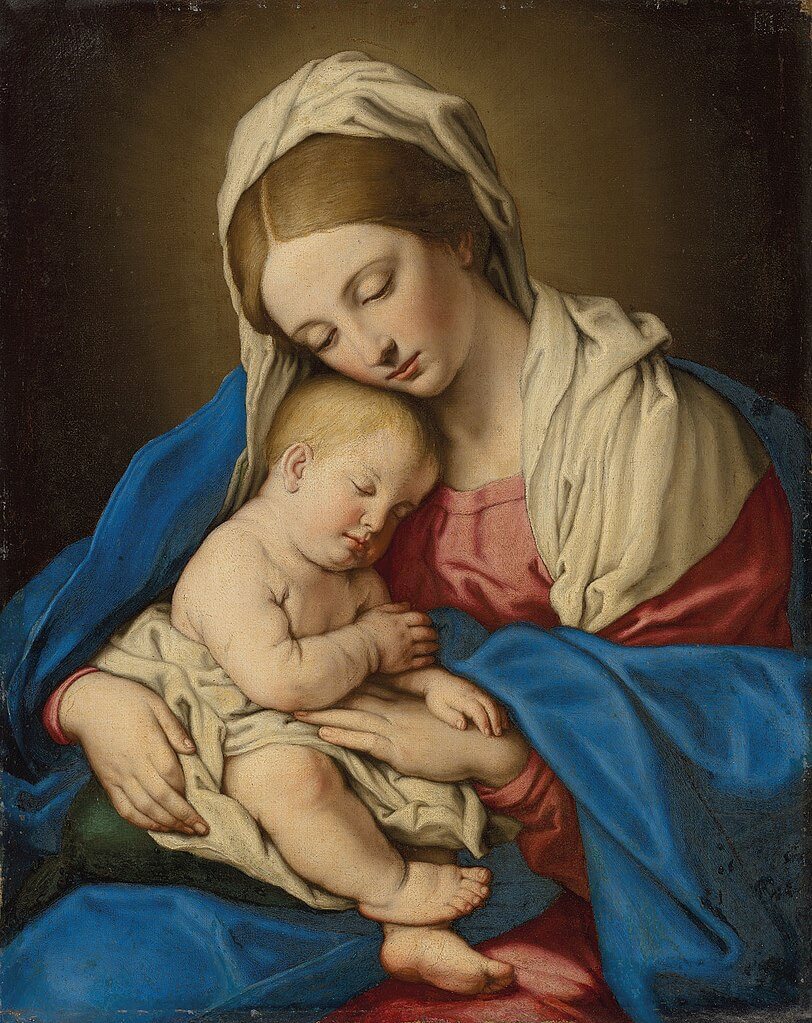
Do you want a deeper understanding of the Marian dogmas? Or do you want to deepen your devotion to Our Lady?
Are you interested in the Church’s teachings on Mary, but not quite convinced of the evidence for these teachings in Sacred Scripture?
Maybe you have a friend, co-worker, or family member who is adamant that these dogmas are un-Christian inventions of a false church.
Here are some resources.
Fascinating book written by a former-pastor who converted to Catholicism:
Click: Behold Your Mother: A Biblical and Historical Defense of the Marian Doctrines
Digital Series on Mary and the Rosary, from which this article is an excerpt:
Click: Full of Grace
Catholic Apologetics on the Marian Dogmas:
Click: Catholic Answers Resources
We hope these resources are a great help to you.
Do you have a favorite Marian dogma?
Do you struggle with any of the Marian dogmas?
Were any of these details on the Church’s Marian teaching a surprise to you?
Share your thoughts with us in the comment section below!

